A generation is a long time, even for a city, and the past thirty years have been especially busy in Budapest. Looking back into the past, many are surprised to learn what was not a part of the city back then, which is so obvious today. Also, many are quick to forget parts of the city that could only survive in memory.
Statues moved to Memento Park
Several ideologically charged statues were removed from the streets of Budapest, had been facts of everyday life before the fall of communism. Lenin statues from Dózsa György Road and Csepel, the statue of Ferenc Münnich from Honvéd Square, Néphadsereg Square at the time, and a memorial from the street that bore his name (now Nádor and Zrínyi Streets) were removed.
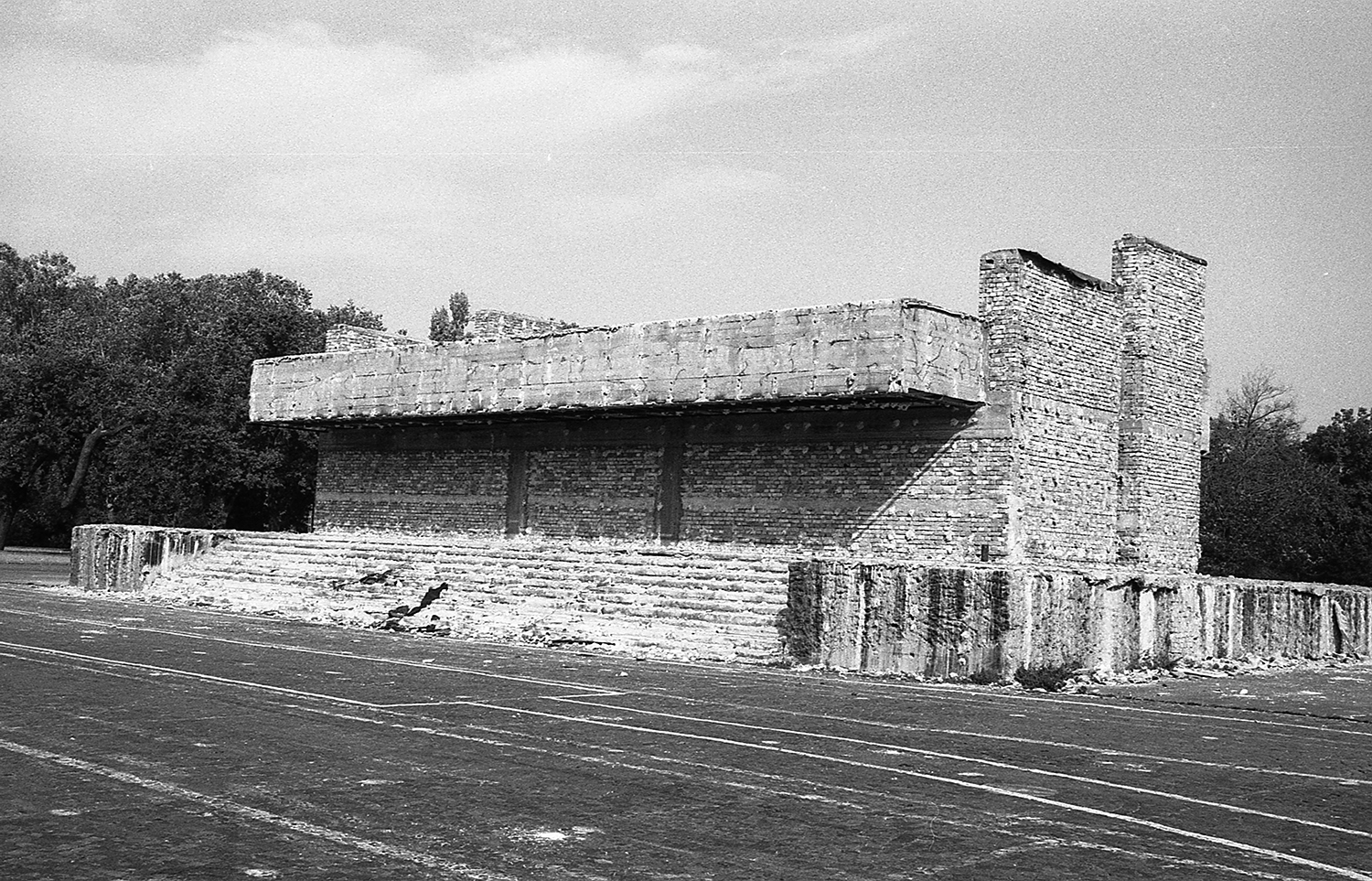
The former stage of Felvonulási (present-day Ötvenhatosok) Square was built around the pedestal of the Stalin statue torn down in 1956. The crumbling building was destroyed in 1990 (Photo: Fortepan/No.: 138547)
However, several communist statues could still be found around the city in the 1990s. The former monument of the Hungarian Soviet Republic was left standing until November 1991, as were the statues of captains Steinmetz and Ostapenko, the side figures of the Statue of Liberty on Gellért Hill, and the inscriptions glorifying them and the only cubist Marx and Engels statue on Jászai Mari Square.
Although crumbling, the official stage on Felvonulási Square was only torn down in the autumn of 1990.
Glass palace on an empty plot
Buildings housed on plots that stood empty for decades before 1990 have been filled. One of these is the East-West Business Centre on the corner of Rákóczi Road and Múzeum Boulevard. Built between 1989 and 1991 according to the plans of Lajos Zalaváry and Gábor Zoboki, the building is architecturally considered one of the best modern office buildings in the city, even today. Thirty years ago a flurry of construction activity would have filled the site, permanently closing the car park that had been there for decades.
Two empty plots on Kálvin Square had already been built up by the time. Csaba Csontos designed the ten-storey blocks of the Korona Hotel at the end of Kecskeméti Street. The hotel was not universally accepted at the time but focus quickly shifted to the buildings erected on two other empty plots, number 11 and 12–13. The glass-steel office blocks designed by Csaba Virág and Sándor Göcsei have been at the centre of a crossfire ever since, as residents have still not grown used to the buildings that are so unlike their surroundings.
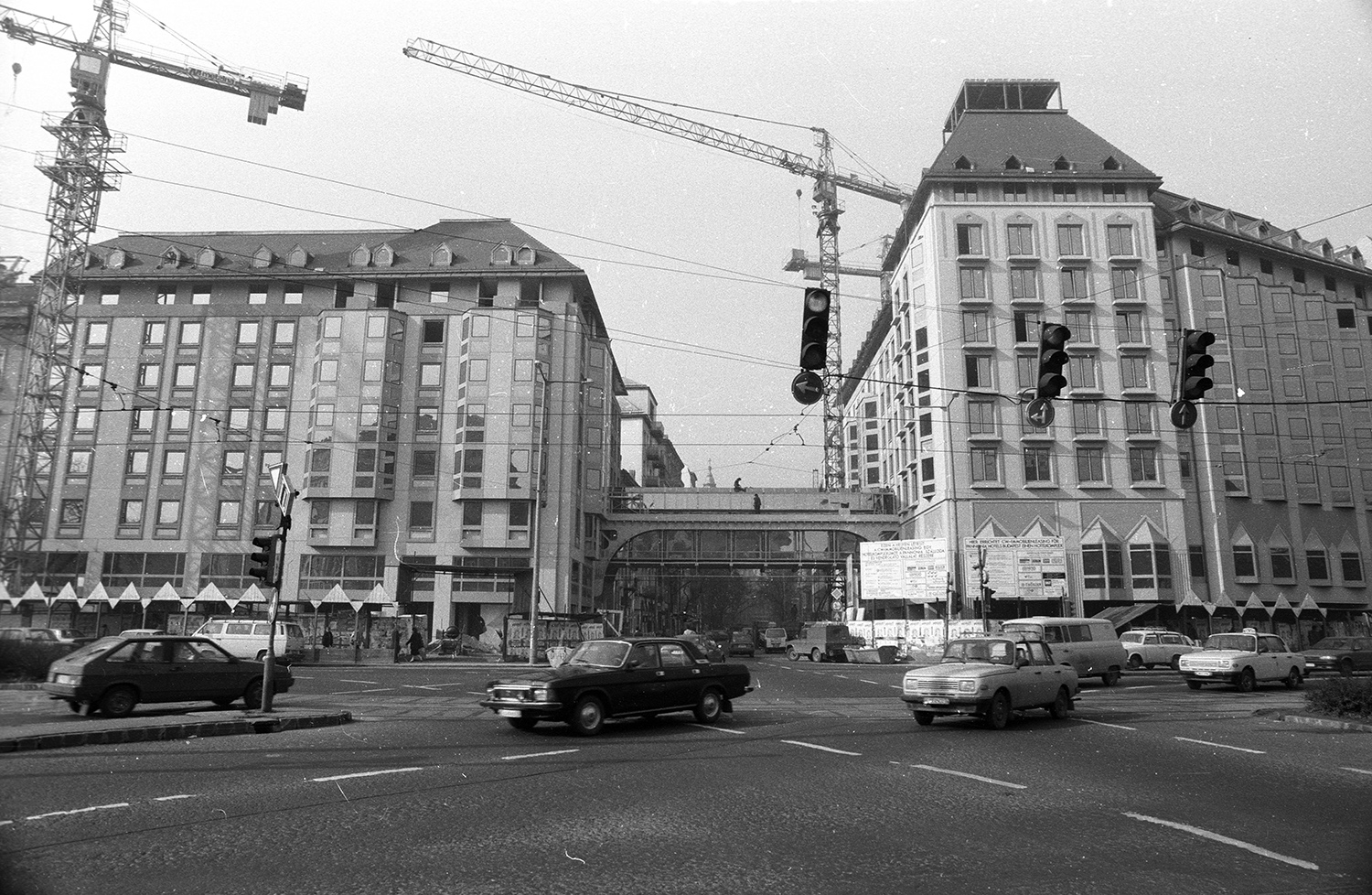
The two blocks of the Korona Hotel were completed in 1990 (Photo: Fortepan/No.: 76452)
From factory to a cultural centre
While operating a factory in the middle of the city is inconceivable to our modern minds, in 1990 a handful of such relics remained. One of them, at the foot of Rózsa Hill, in what was once the Ganz Factory, and now houses Millenáris. The factory burnt mazut during operation, and according to the 2 November 1990 issue of Magyar Hírlap:
"belched out its sometimes, white, sometimes black smoke in various colours of the rainbow, which settled on windows in the area, offering a perfect blind even in the autumn months."
Although an official doctor had told the journalist that the factory would soon convert to natural gas, the author ended his article with the quiet melancholy so characteristic of the time, asking:
"how long will it stand here, wedged between residential buildings, further deteriorating the already unbearable air of Mártírok Road [today Margit Boulevard – ed.], severely affecting the inhabitants of the area...?"
The late successor to Ganz finally moved out of Lövőház street in 1999, and Millenáris Park opened in 2001.
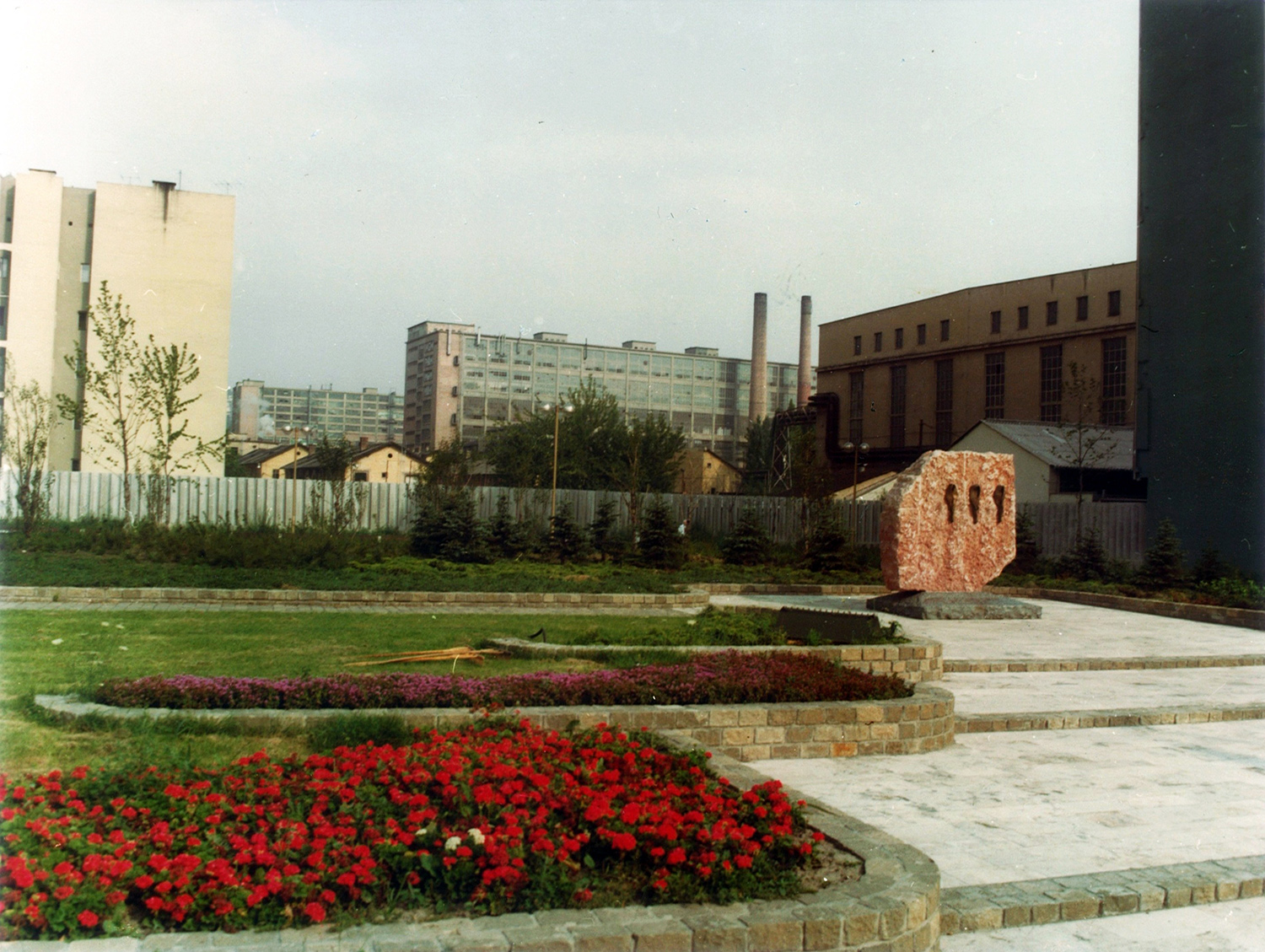
Former Mártírok Road with the Monument to the Martyrs and the buildings of the Ganz factory in the background, today the Millenáris Wind Gate (Photo: Fortepan/No.: 141356)
Pedestrians retake roads
In 1990 cars ruled the streets of Budapest without questions. Every square was filled with a mass of parked cars, as were empty plots and what later became pedestrian areas. The plot on Erzsébet Square, which is today the Kempinski Hotel was no different. A car park operated on the plot of the hotel designed by József Finta and completed in 1992.
Pedestrians would also have had a harder time walking along Deák Ferenc Street, also known as Fashion Street since 2008. The street was only added to the city-centre pedestrian zone in 1992. The northern section of Váci Street was already closed to traffic, but to the south of Szabad Sajtó Road, a different world began.
The southern section of Váci Street was converted to a pedestrian area in 1996, but in 1990 this seemed a far off dream. The 26 January 1990 issue of Heti Budapest wrote:
"There are no trees on this section of the street, or in Veres Pálné Street, or in Kossuth Lajos Street. Workers in shops on the street complained of the lead-filled air."
Pigeons also caused a few headaches alongside cars.:
"Two rows of cars parked one metre apart, heavy traffic between them, noise, dogs without muzzles. The pigeons have also basically destroyed the whole area."
The pessimism also characteristic of the time emerges from the continuation. It seems the author believes that the wait for a pedestrianised area is in vain: "The noise on this souther hemisphere is unbearable. The construction of a pedestrian street has been planned for so long, but if not hurried along, it may never happen, and that could lead to so many trouble, as is obvious from the above."
The article also notes that air quality was further diminished by the fact that many homes were still heated with coal, even in the city centre, and few small gardens could be seen in the courtyards of houses - making the sight even less appealing.
Council housing, telephone lines and satellite dishes
But what was the housing situation in 1990? The 19 January 1990 issue of Heti Budapest reported that over 10,000 council flats stood empty around Budapest, which at the time had a population of two million. Some of these were intended to eliminate co-leases. Many find it surprising that co-leasing, now mainly known from old comedy recordings, was a major problem only thirty years ago.
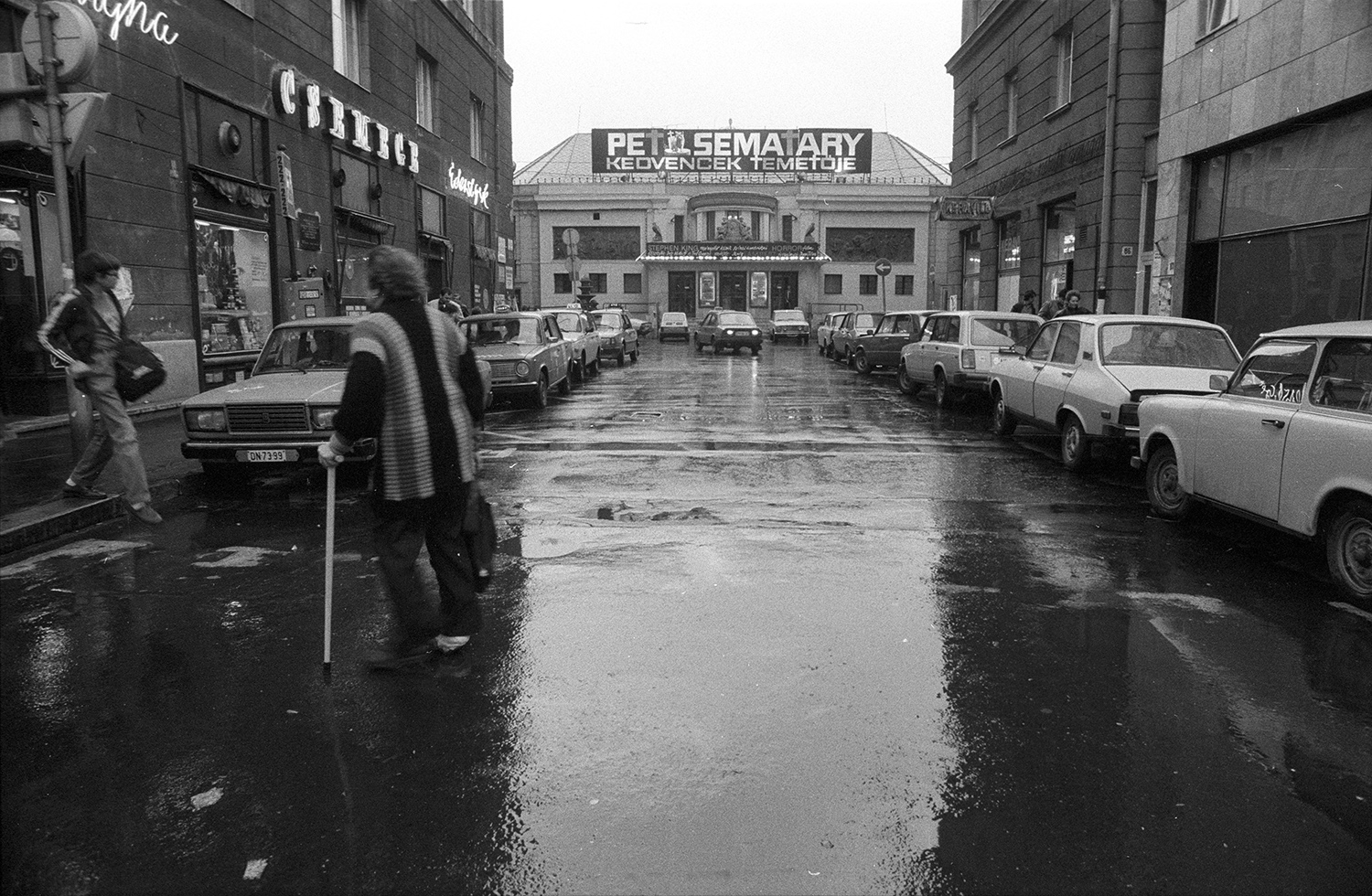
Corvin Cinema as seen from the outer ring road in 1990, today a pedestrian area (Photo: Fortepan/No.: 76422)
Settling the questions of housing, however, raised another question: who owns council flats in Budapest? The newly created two-level democratic council system in Budapest is completely alien to the historical traditions of the city and continues to cause problems to the present day. The 18 November 1990 issue of Vasárnapi Hírek asks: Who will own the formerly state-owned properties in Budapest? The central city council or the local district councils? In hindsight, the majority of flats were handed to the districts, which function almost as cities within the city and most quickly became privately owned.
Newspaper advertisements paint the clearest picture of real estate sales at the time. Most periodicals had separate sections for the exchange of council flats, the sale and purchase of privately owned properties and letting. While the price of a flat would be the most important element of such an ad today, sellers at the time generally only listed a telephone number, or if no line was connected, the address and a time when the flat could be visited.
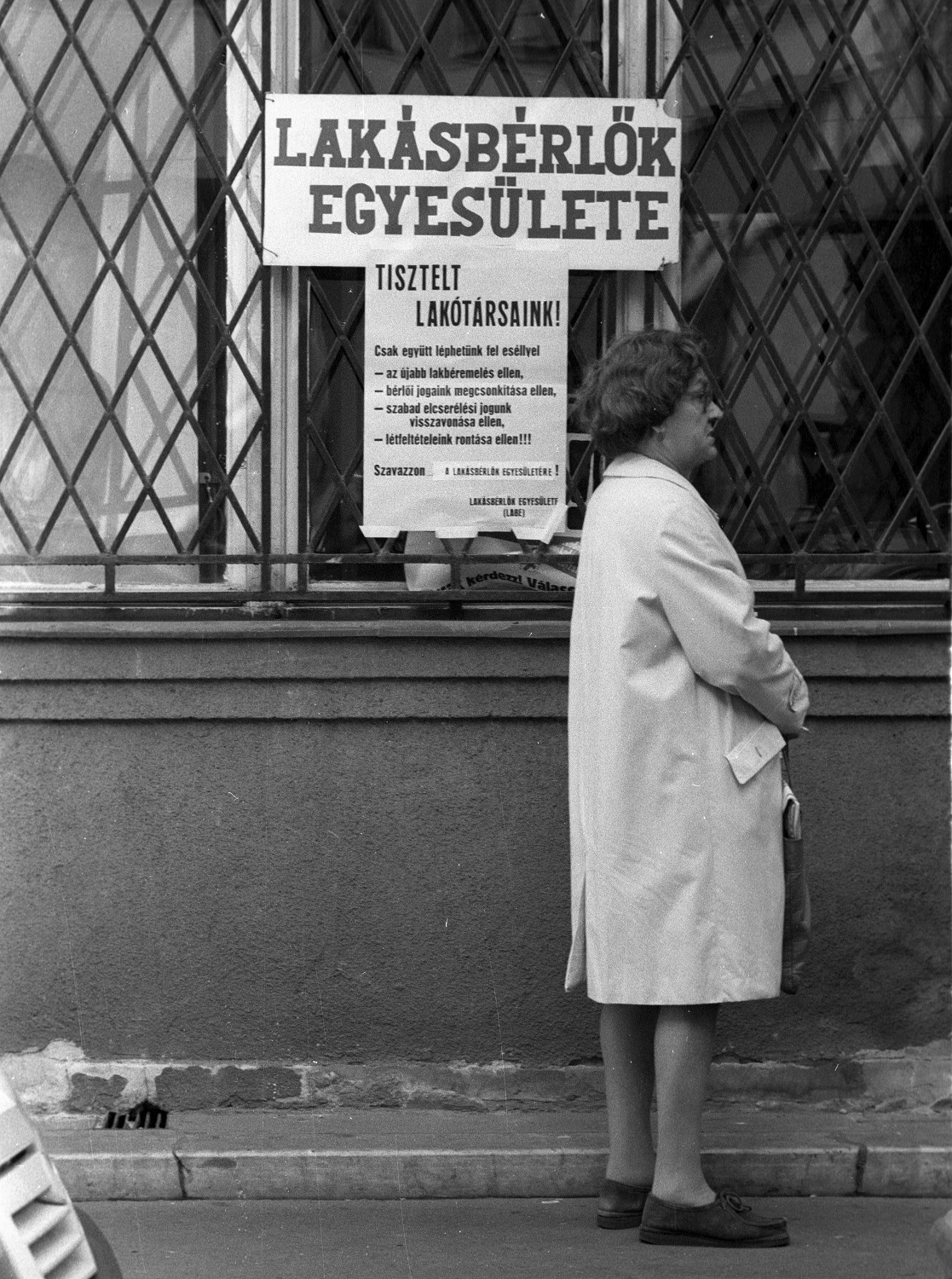
In 1990 the housing situation was no simpler than it is today. A poster from the Tenants' Association in 44 Lónyay Street reads "Dear Residents! Our only chance is to work together, to stop a new raise in rent, to prevent our rights as tenants being curtailed, and ensure our free right to trade flats, the degradation of our living conditions. Vote for the Tenants' Association!" (Photo: Fortepan/No.: 76430)
Prices can be deduced from a few exceptions: a 70.5-square-metre third-floor flat on Mátyás Kriály Road in the 12th District was priced at 35 million HUF, while a 100-square-metre house in Zugló, with a loft conversion permit, was 4 million. A flat on Fehérvári Road with a satellite dish, cable TV, movie channels and good transportation was available for 1.9 million. Other buyers hoped to secure an exchange: for 300.000 HUF and a Zhiguli, a buyer would have liked to move into a one-room flat.
The air conditioning and high-speed internet of the day was a phone line. Every advertiser was quick to emphasise the phone connection!
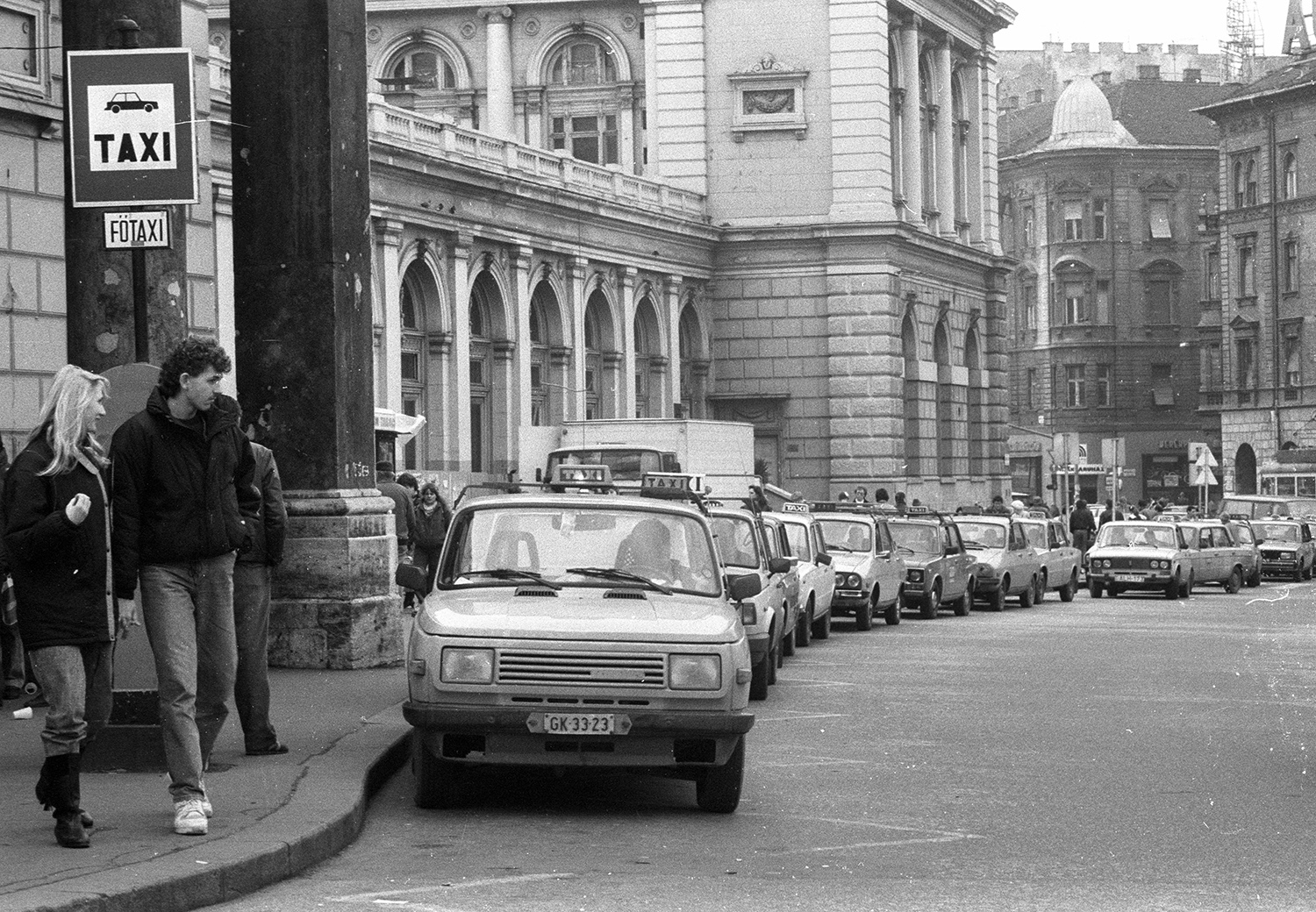
Although Keleti Pályaudvar, the eastern railway station has never been a prestigious area of Budapest, in the 1990s it was taken over by homeless, resulting in Police intervention (Photo: Fortepan/No.: 76442)
However, many had nowhere to go. Lengthy articles were published about the sudden appearance of a mass of homeless people in the city. After they "occupied" eastern railway station as well, MÁV decided to close to station overnight, and the homeless were moved to hastily created temporary accommodations. Sadly, in the last thirty years, little progress has been made in this question.
Thus, the Budapest of 1990 was at the beginning of a transformation. The cityscape slowly began to develop after decades of neglect, and changes in housing policies led to an increased number of renovations around the city. Empty plots were slowly built-up, and the assorted tobacco, flower and newspaper stands slowly disappeared. The number of pedestrian areas increased, and cars were pushed from the city, a tendency that continues to the present day.
However, as flats entered private ownership, several owners have begun to change windows, repaint parts of the facade and destroy decorations without consulting the other residents of the building. This could naturally be curtailed through stricter regulations or incentives.
Thirty years is a long time, and through them, Budapest had become a major city and a tourist attraction to match Vienna or Prague. Nevertheless, if a visitor were to travel back in time, they would be surprised at what they saw.
Cover photo: 1956 memorial ceremony on 23 October 1990. The scaffolded Parliament building in the background (Photo: Fortepan/No.: 136614)

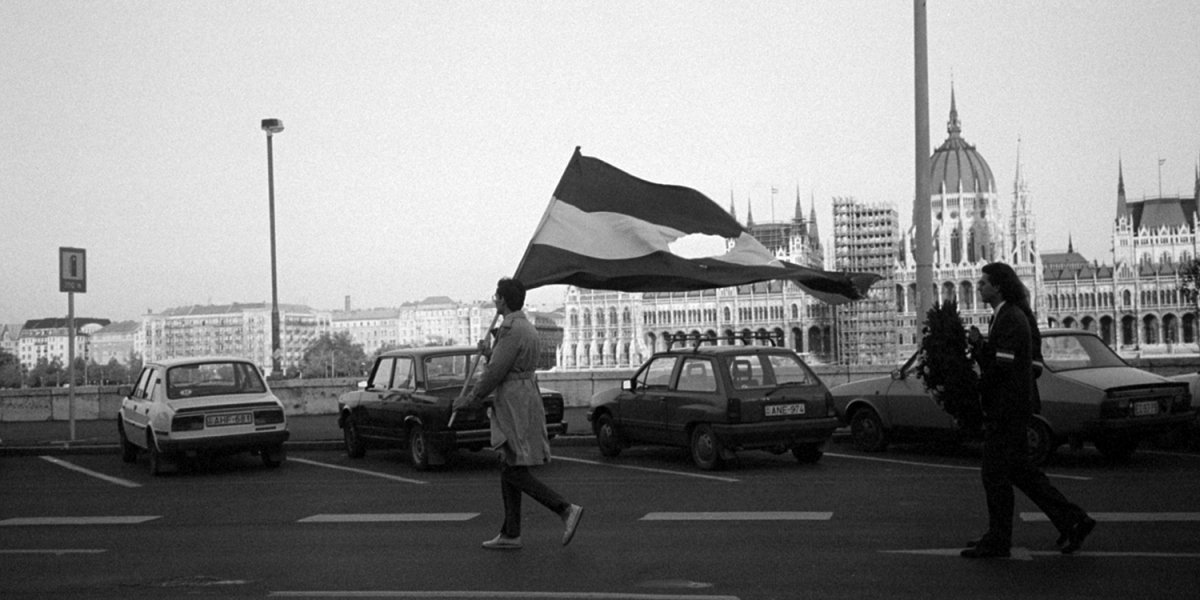


































Hozzászólások
Log in or register to comment!
Login Registration